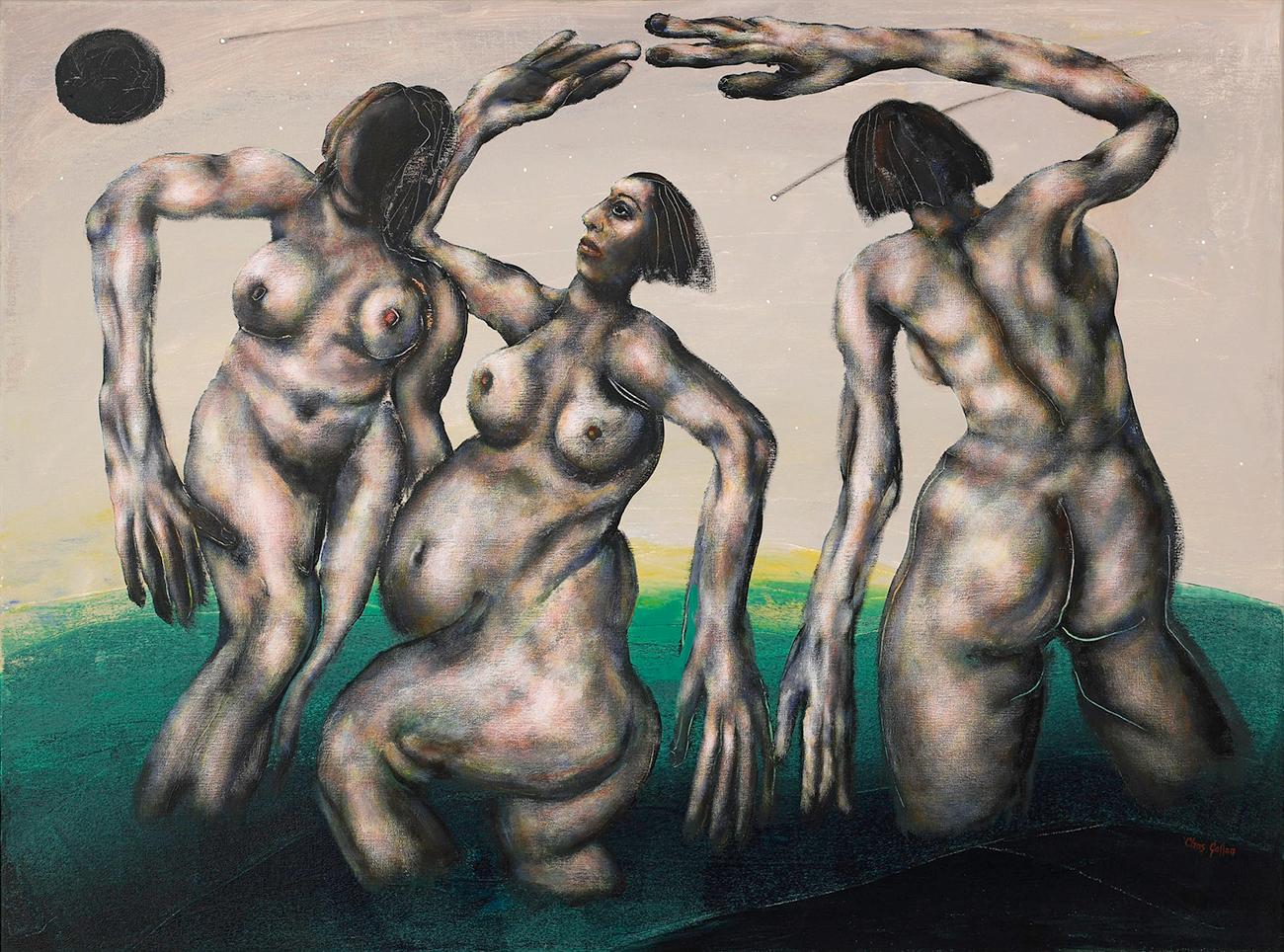
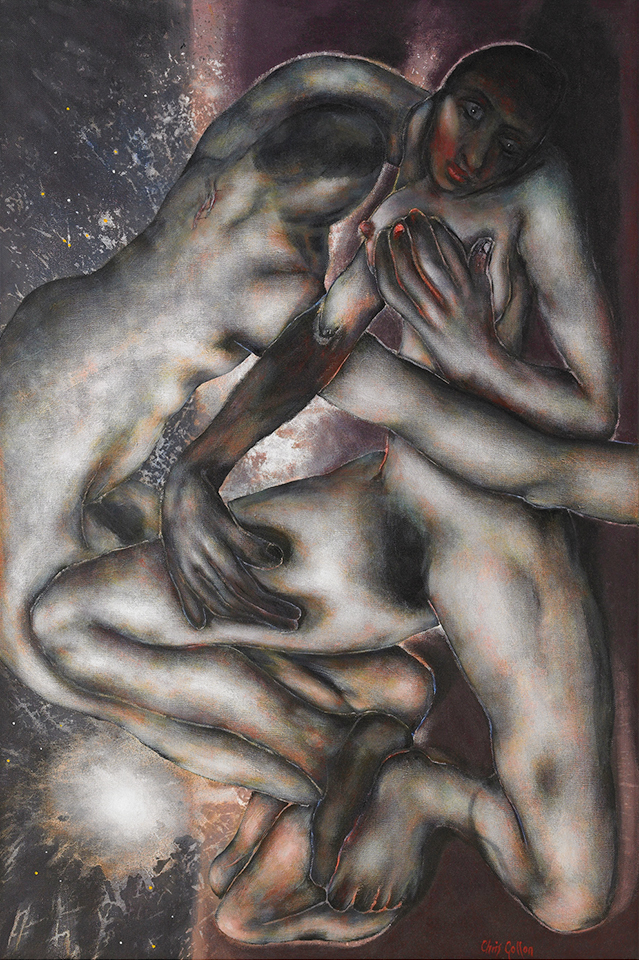
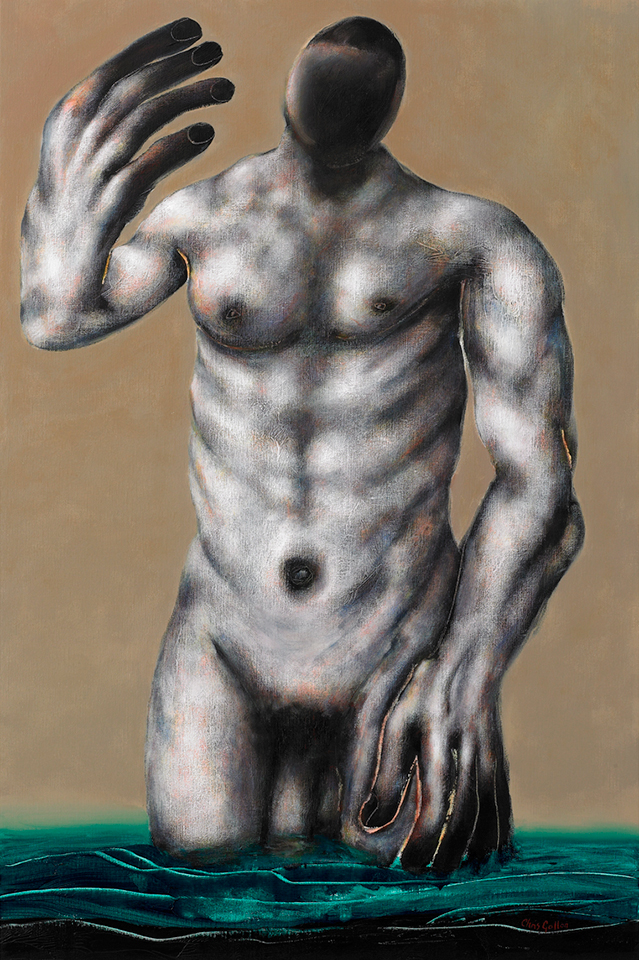

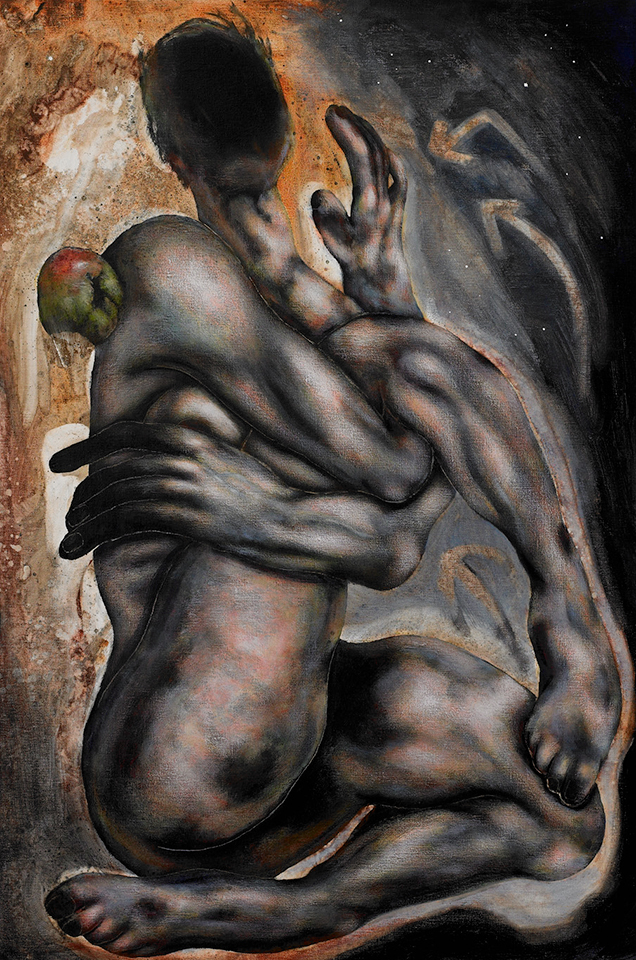
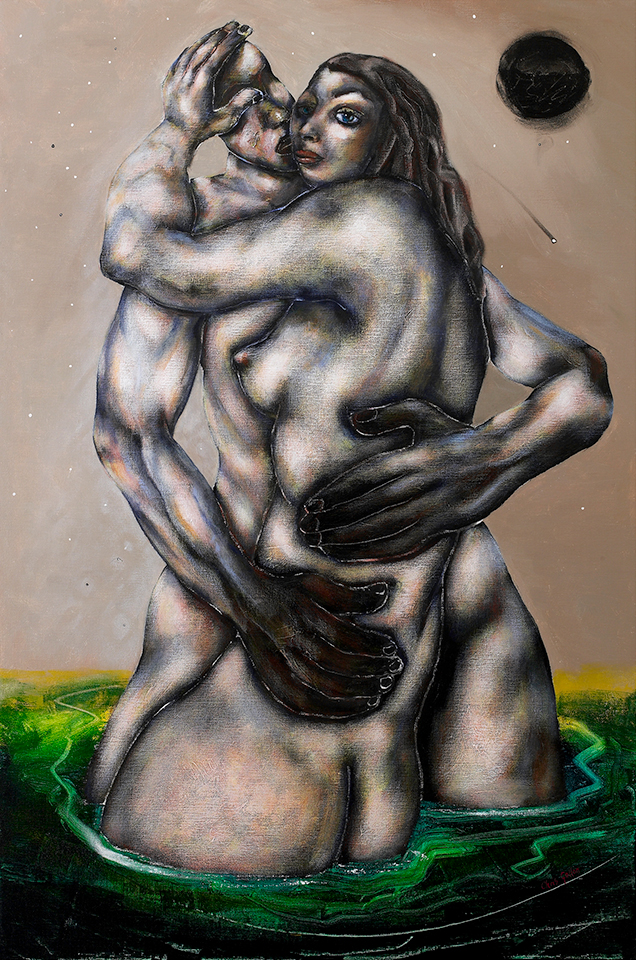
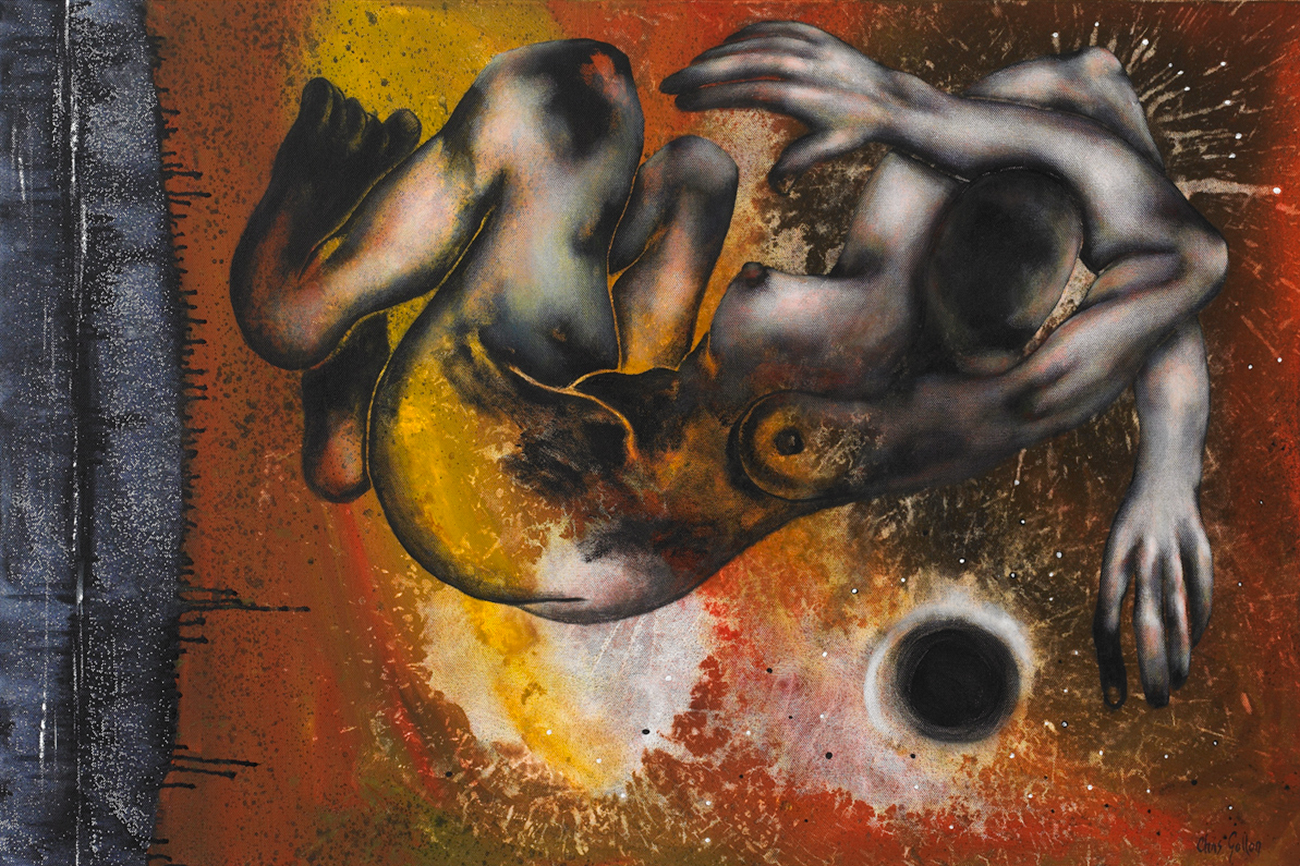
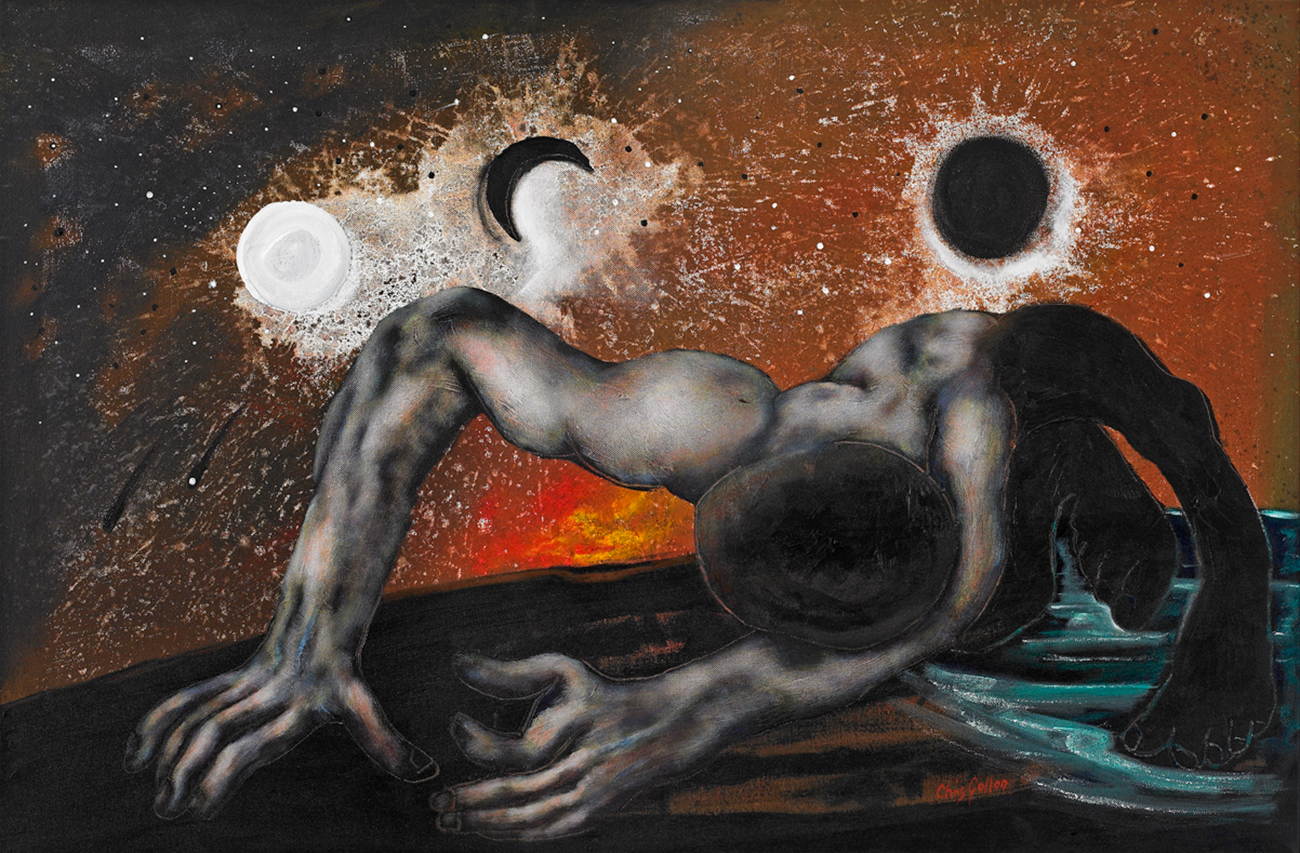

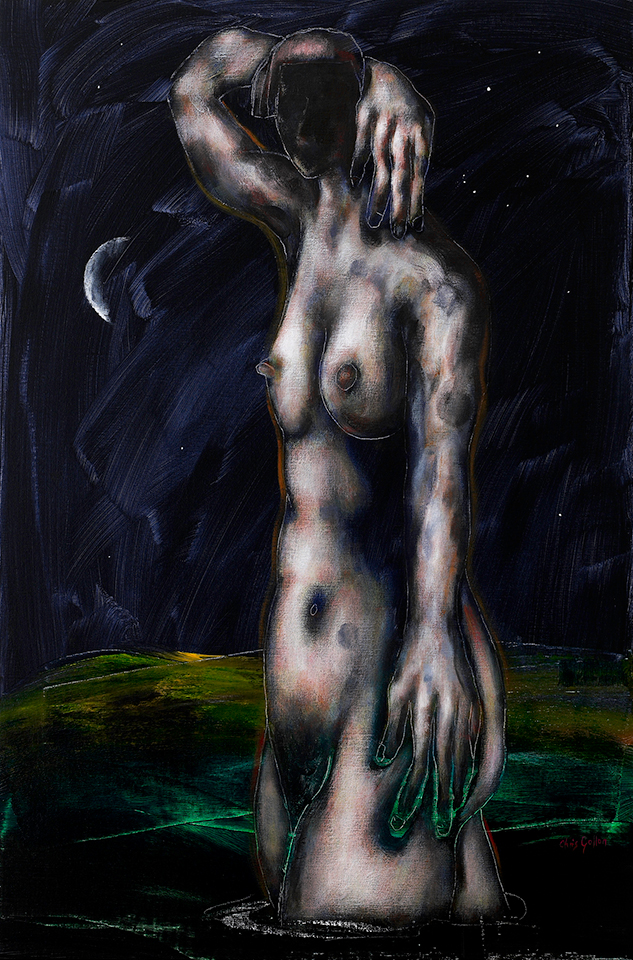
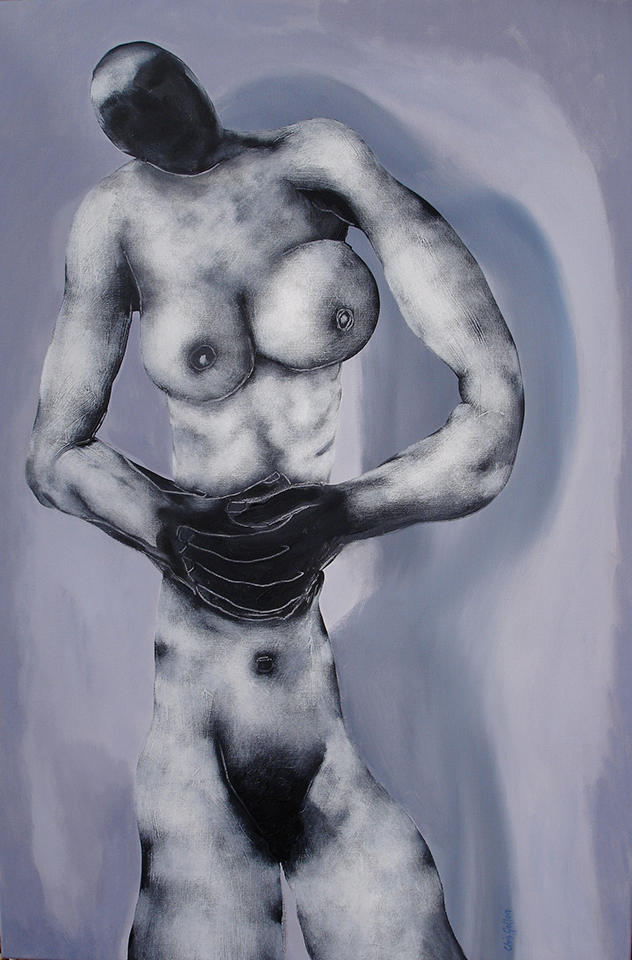
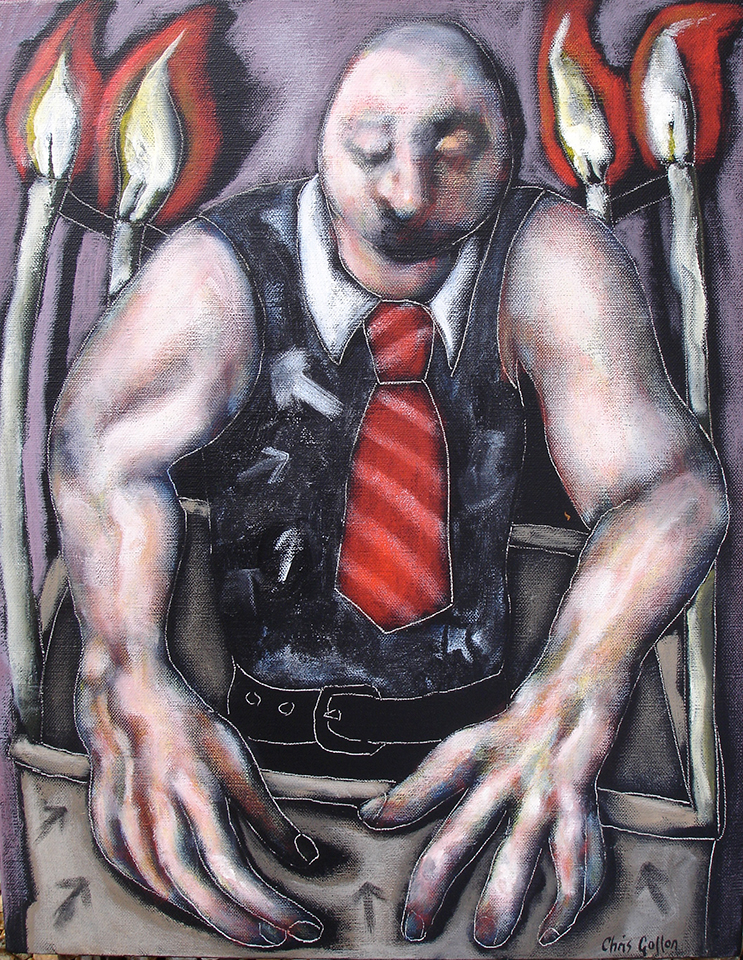
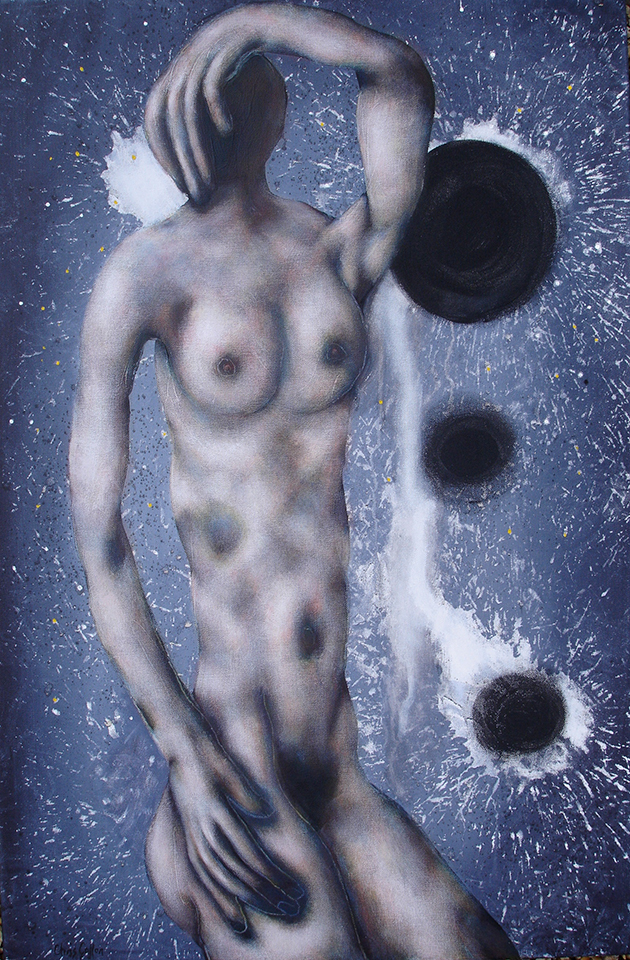
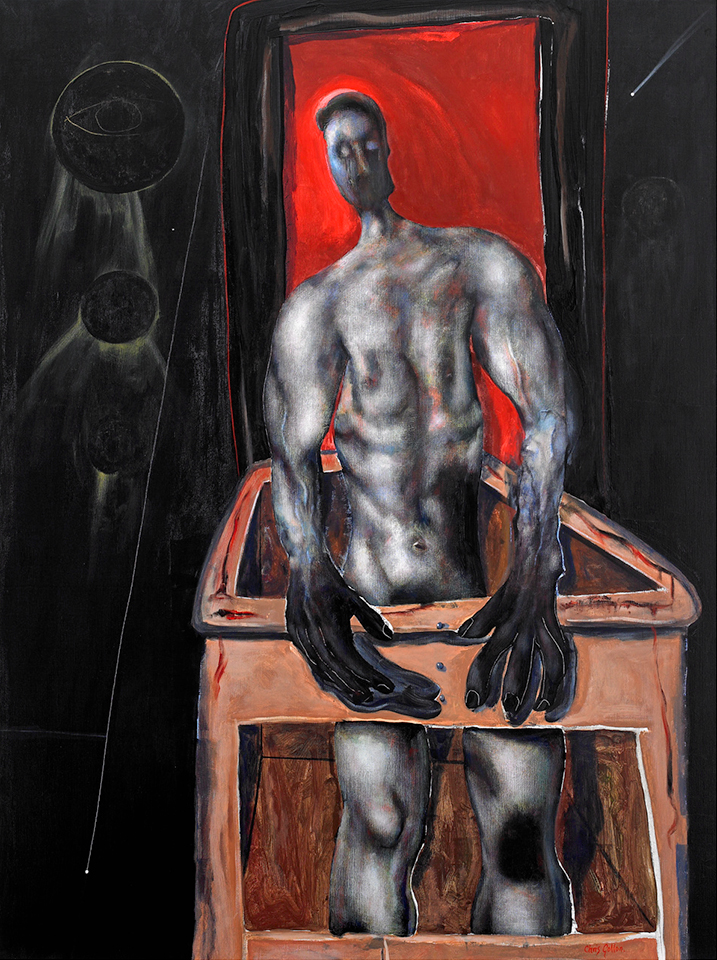
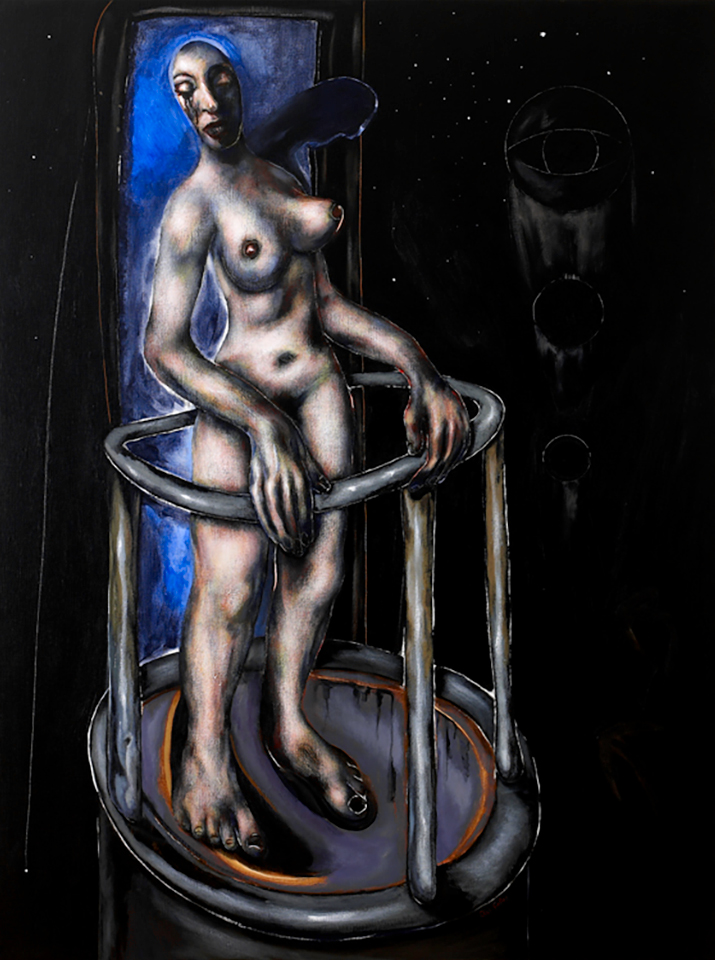
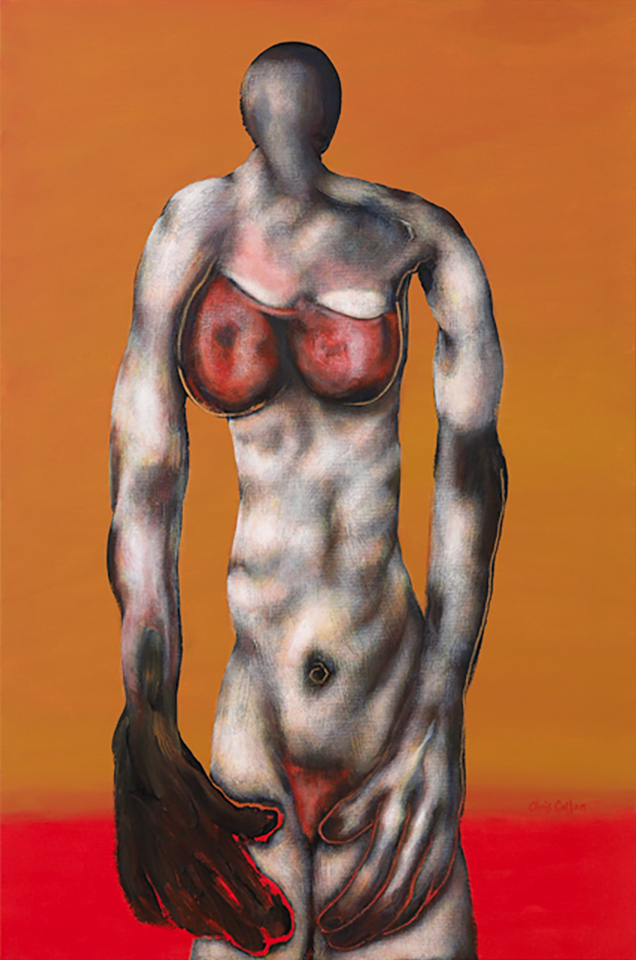
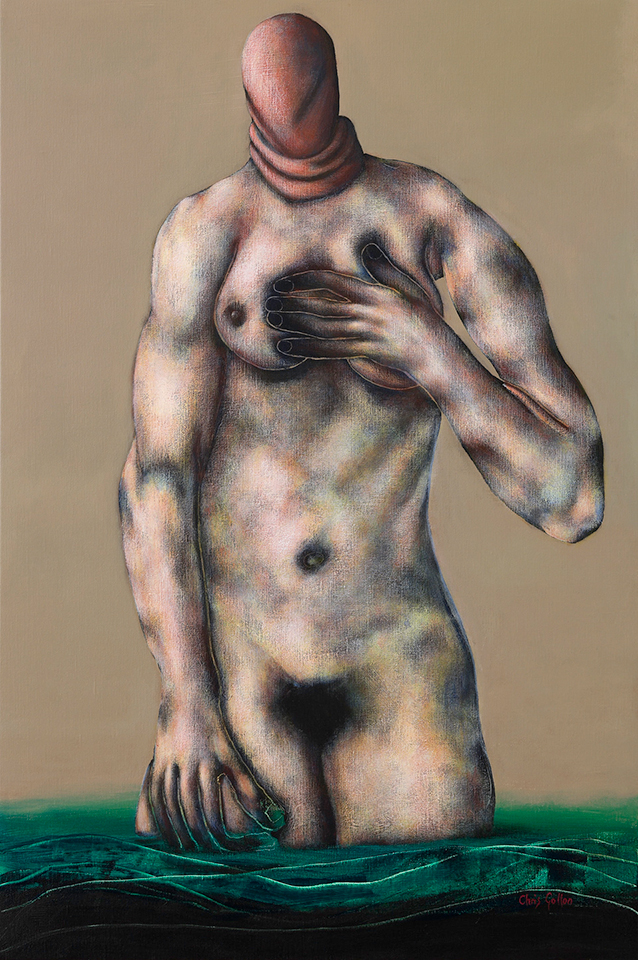
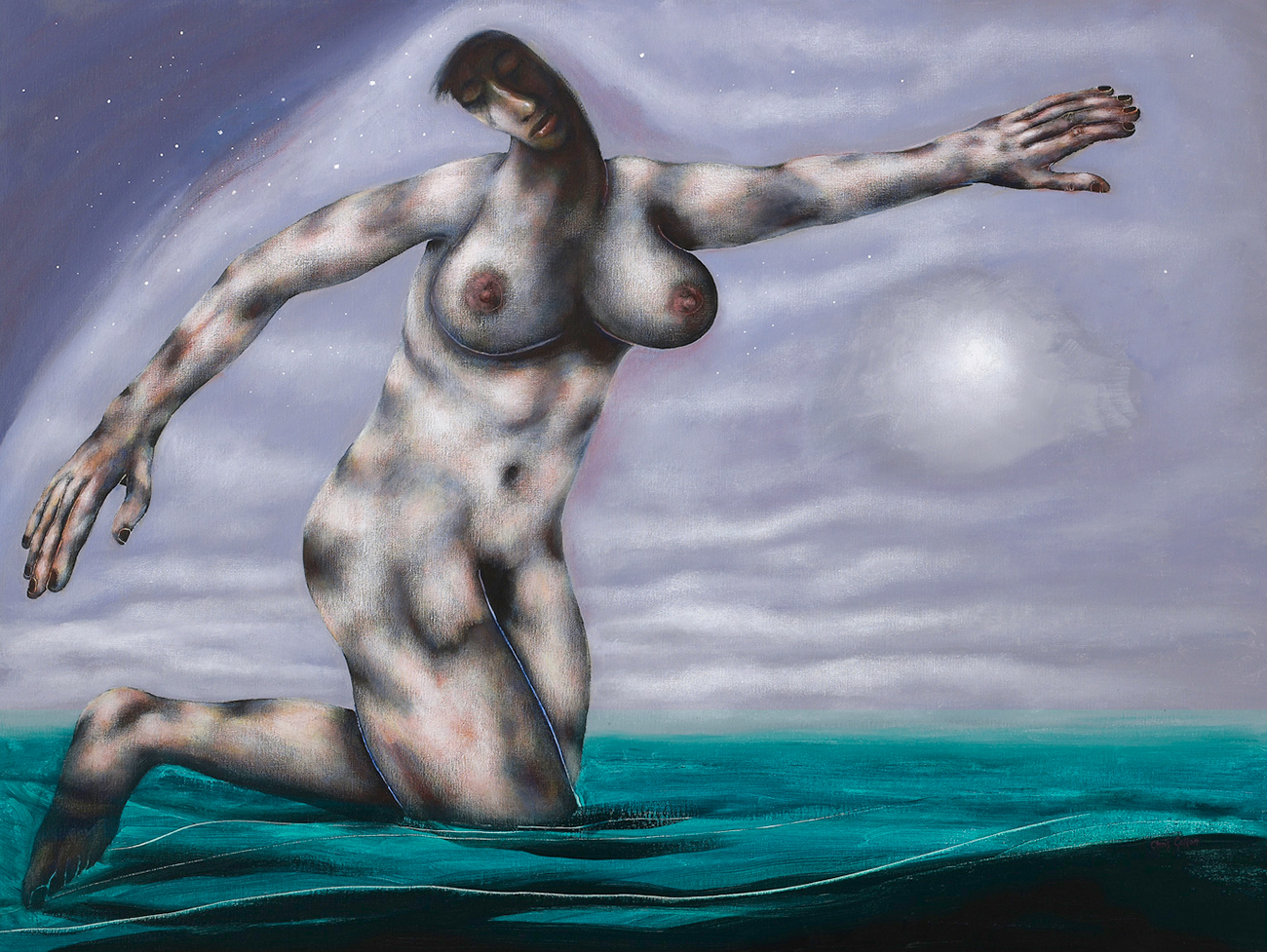
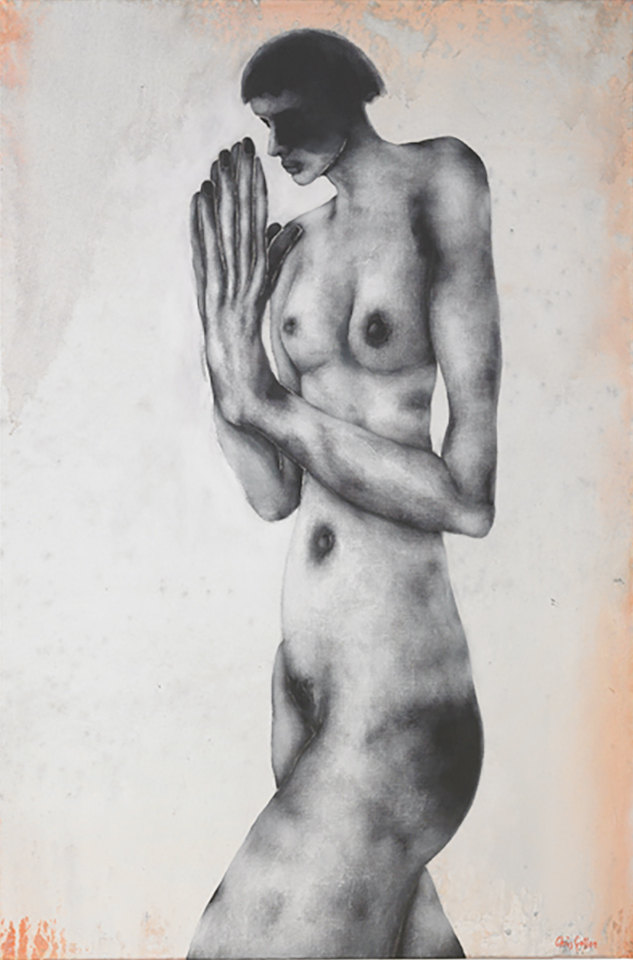
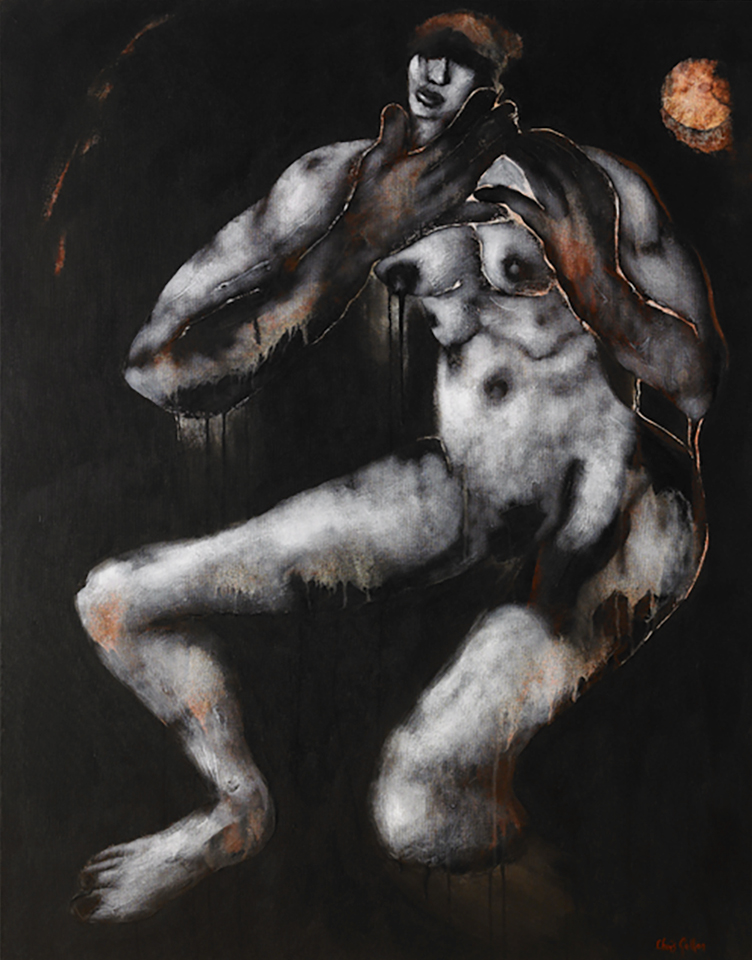
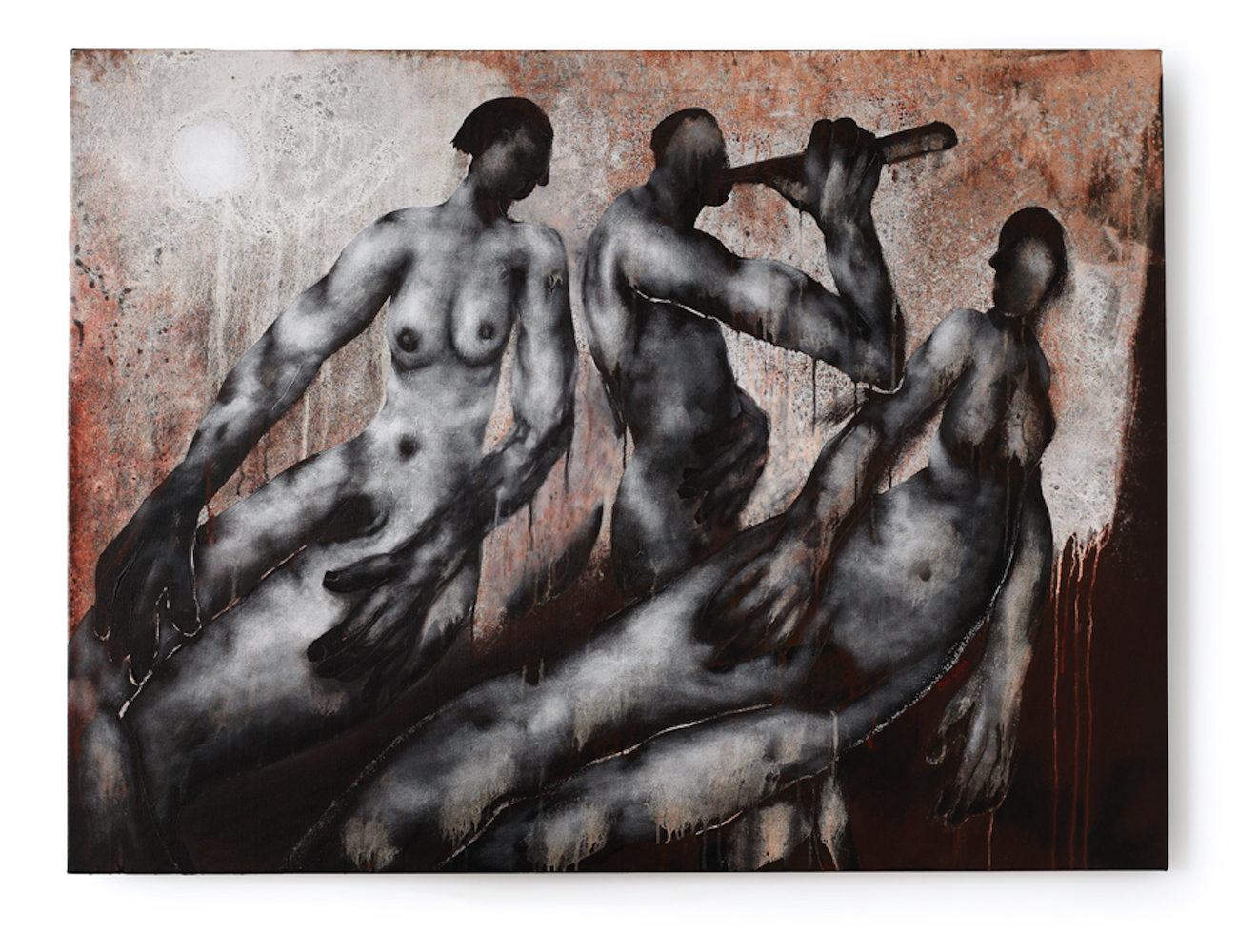
In advance of and to prepare for his unique Fellowship and Residency at the prestigious Institute of Advanced Study, Durham University, (January – March 2009), Chris Gollon had to work out various ways of making imagery that allowed human figures to hold ideas. This was necessary if he was to take part with some of the world’s leading thinkers on the Being Human research project, looking at what it means to be ‘human’ in the 21st century. Sub-themes to be tackled by the 10 Fellows included: ‘Home’, ‘Mind/Consciousness’, ‘Boundary Crossing’, ‘Humanizing Practice’, ‘Crises of Personhood’; and ‘Abjection, Bare Life & De-Humanization’. It was clear Gollon needed to develop a new visual language to engage in the research, and to do this he started to look at the naked human and the tradition of the Nude.
First, a quote from Kenneth Clarke’s book ‘Civilization’, which looked at the Nude as essentially decorative:
“Decoration exists to please the eye. Its images should not seriously engage the mind, or strike deep into the imagination, but should be accepted without question, like an ancient code of behaviour.
From this point of view, the nude provides a store of perfect decorative material. It pleases the eye and has already been reduced to a simple memorable form, almost as a condition of its survival.
In our dreams we fly or swim, and attain thereby a rapturous freedom, which in our waking lives we know only in love. So for the body to be a perfect motif for decoration, it must be in ecstasy”.
Second, Chris Gollon came across another quote, this time from an unknown source:
“Creativity is merely the bringing together of two hitherto unrelated phenomena and allowing them to be worked on by the mind.”
The first two perspectives helped Gollon develop the language he needed:
“Taking decorative art to its peak, then making these figures relate, and instead of energy infuse them with ecstasy, which is unstable, and hypnotic. Then, add another subject matter, an unrelated subject matter and see what happens.” Chris Gollon, 2008
This turning point helped Chris Gollon portray ideas, for example his Venus (I) and Apollo (pictured) enabled him to ask the question whether gods we no longer worship still seem to hold some supernatural power. He also read that the great 20th century physicist Richard Feynman stated that we still don’t know why the planets move in ellipses, in the Rennaissance it was thought that it was angels beating their wings and propelling them. Today, he noted, we still don’t know why they move in ellipses, but that he liked to think it was angels without wings. This appealed to Chris Gollon, and he painted those very ‘Angels Without Wings’, in which they seem to be floating, with some sensuality, in a gaseous universe. He also began to look at gods and angels and their relationship to the human, and to put the human on trial in order to interrogate what it means to be human. This series of paintings ‘Early Thoughts’, successfully helped him develop a visual language to embrace the words and ideas of the academic thinkers on the Being Human project. His imagery then spoke back to them, provoking in them new thoughts and ideas.